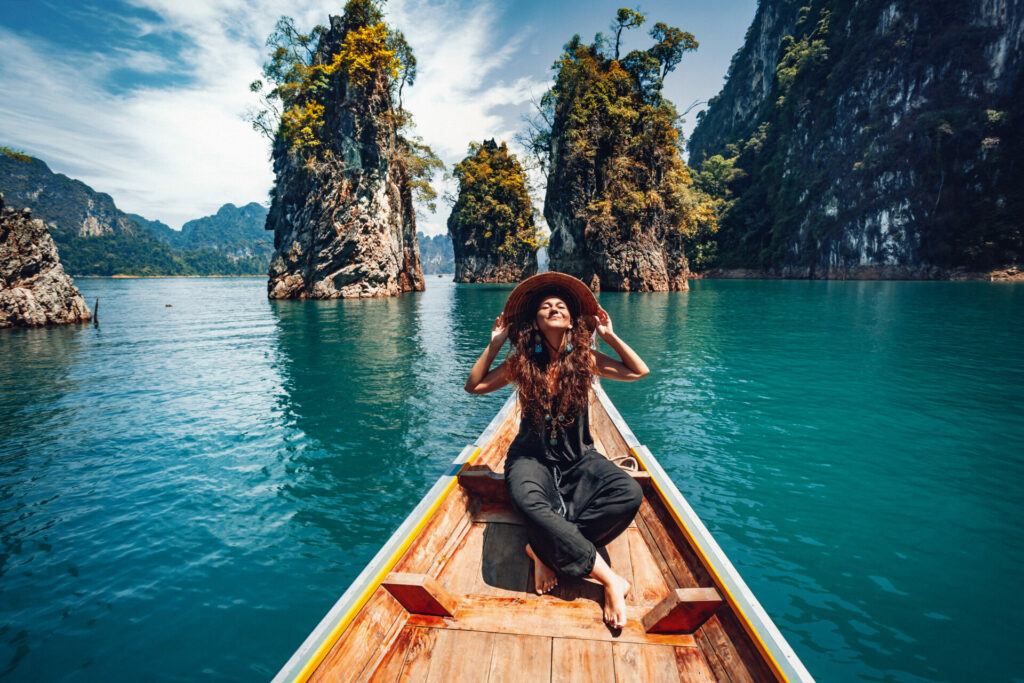I was lying on the four-poster bed of my safari-chic villa on Anantara Sir Bani Yas Island, leafing through a novel and surrounded by the silence of a wildlife sanctuary, when a whiskery nose at the terrace door caught my attention. A rock hyrax or dussie (the rabbit-sized creature you’d more closely associate with Table Top Mountain in Cape Town) had come to investigate. It peered into my room, took a few bold shuffles inside, sniffed the air, then scuttled off across the terrace into the evening sun, leaving me feeling more than a little privileged by my unexpected visitor.
Outside, a group of peacocks were parading past like they owned the place, and in many ways, they do. These turqouise-feathered residents roam freely across the tree-lined grounds of Anantara Sir Bani Yas Island’s Al Sahel Villas, the African themed retreat nestled in a 47-square-kilometre wildlife preserve.
Out on the private villa terrace I find myself looking out at Arabian oryx and sand gazelles, calmly grazing under a canopy of native trees, completely at ease in this sanctuary setting.
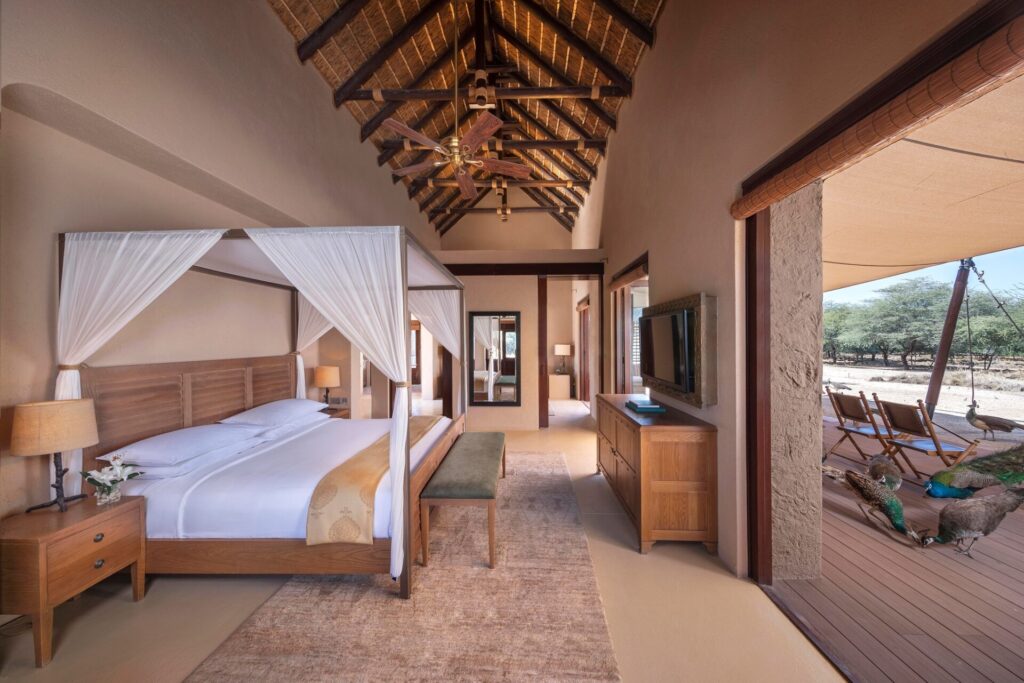
And that’s exactly what this island is: a sanctuary. For guests seeking nature and stillness, and for the 30 species of mammals and 180 species of migratory birds, many of them vulnerable or endangered, that call this place home.
The Island That Grew a Forest
Sir Bani Yas wasn’t always an island, however. Geological records show it became one around 7,000 years ago, after the last ice age when sea levels rose and carved off this patch of desert from the mainland. In the 1970s and ’80s, His Highness Sheikh Zayed, the Founding Father of the UAE, launched one of the most ambitious environmental experiments in the region: to green the desert.
More than 3 million trees were planted here. Many are still standing today, some over 50 years old, sheltering not just the wildlife, but representing an early belief in sustainability via regeneration
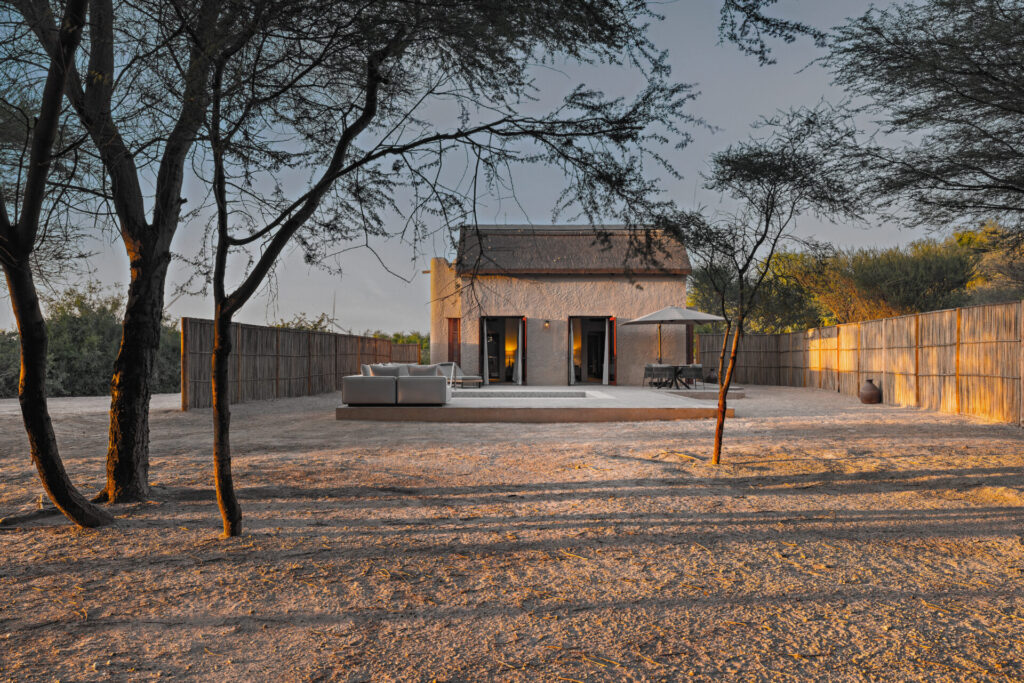
In the heart of the island, natural salt rocks still rise from the valley floor, a reminder of the land’s marine origins, while across the sanctuary, salt blocks are placed intentionally for the island’s wildlife, offering essential minerals in this arid environment. It’s clear Anantara Sir Bani Yas Island is no token eco-resort, it’s a working reserve to conserve African and Indian species and, when conditions allow, to reintroduce them into the wild.
Since 2016, the team here has been working with the Emirates Wildlife Society WWF (EWS WWF) and the Chadian government to reintroduce the scimitar-horned oryx to the Sahara, where they were once extinct in the wild. Thanks to their efforts, they’re now listed as severely endangered, proving what’s possible when conservation is done right.
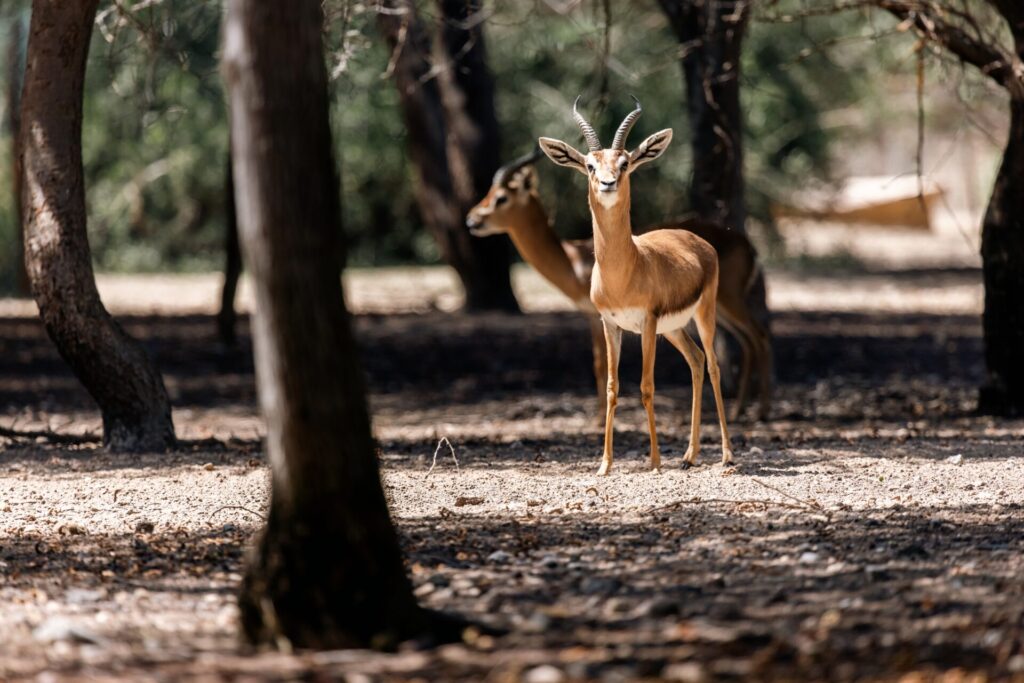
The reserve has also played a key role in the reintroduction of Arabian Oryx and Sand Gazelles to the Empty Quarter, in collaboration with the Environment Agency Abu Dhabi and sister property Qasr Al Sarab by Anantara, helping restore fragile desert ecosystems across the UAE.
Sand gazelles and scimitar-horned oryx aside, elsewhere on the island, blackbuck deer clash antlers to displays their dominance, Indian axis deer wander under trees, gorgeous with their Bambi-like coats, while eagles, falcons, kestrels, and even ospreys circle overhead.
And while 80 per cent of the animals here are from the deer and antelope family, the other 20 per cent is made up of giraffes, ostrich, cheetahs, and caracals who all form part of ongoing efforts to balance populations and reintroduce natural predators.
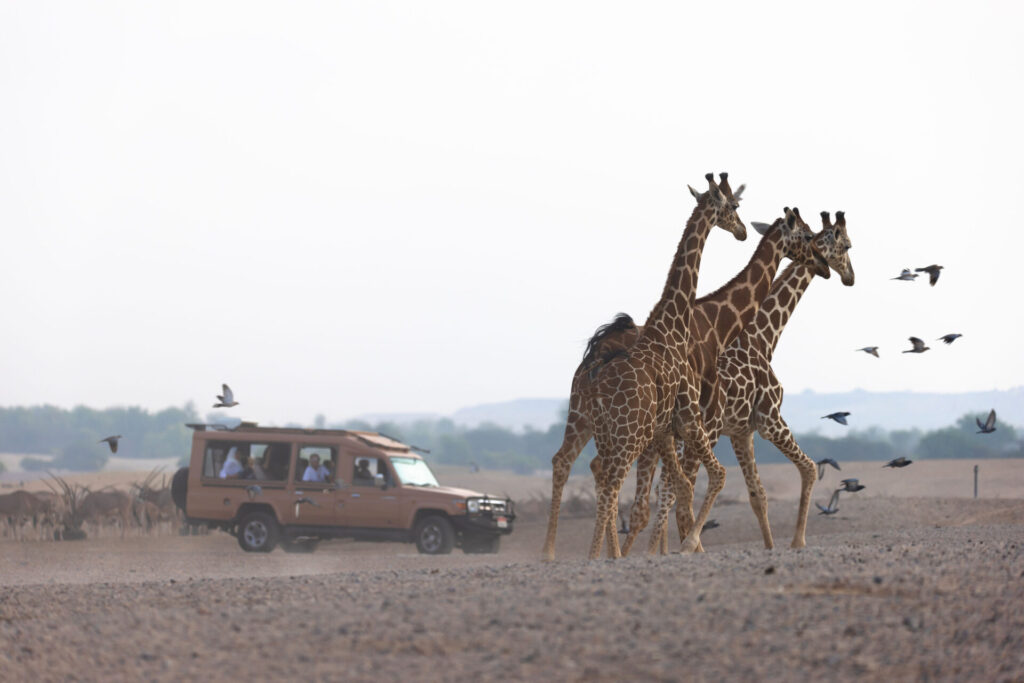
For outdoor and wildlife enthusiasts of all ages, there’s no shortage of adventure on Anantara Sir Bani Yas Island.
Guests can hike through dried-up wadis and salt-rock hills on guided nature walks, birdwatchers will be in their element on guided walks, while other experiences include mountain biking, kayaking through mangroves frequented by flamingoes, and snorkelling with sea turtles in crystal-clear Gulf waters.
For the culture enthusiasts, a hike is available to visit a monastery built in AD600, and for those keen on furthering their understanding of conservation, tours offer a behind-the-scenes look at work being carried out to protect endangered species on the island. If you’re lucky, your guide might be Cluster Manager Mark Penfield, a passionate advocate for eco-tourism and biodiversity, who has spent the last decade championing sustainability on Sir Bani Yas Island.
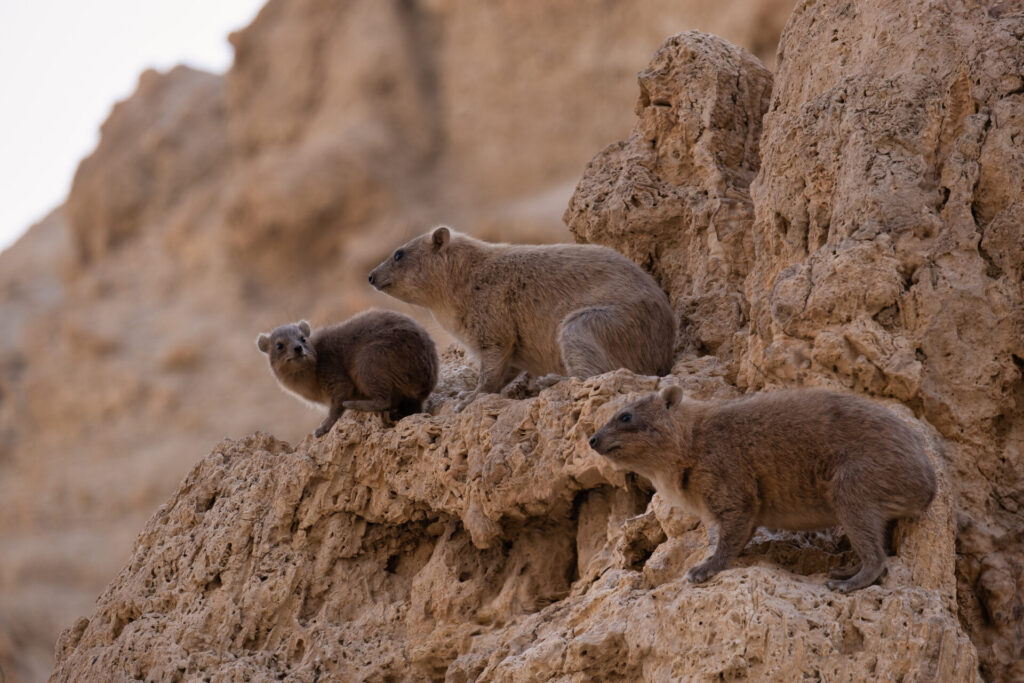
There are two cheetahs living on Anatara Sir Bani Yas Island who, rescued from a zoo, now live in a space roughly the size of a football field as they are still fed, having never learned to hunt. Four endangered giraffes have been born in the past year, making a grand total of 50 now on the island, all tracked and studied. And the eland, whose numbers were out of control at one point due to no natural predators, are now managed in separate groups for balance.
Even the snakes have a story to tell. The Afro-Asian rat snakes and sand boas weren’t introduced by humans as there are no records of introducing them, meaning they were already here long before rising seas cut this land off from the mainland and turned it into an island.
Luxury with a Lighter Footprint
Anantara Sir Bani Yas Island, which is reached by a 30 minute courtesy sea ferry journey, is home to just 60 recently refurbished villas, 30 at Al Sahel, 30 at Al Yamm, each one designed to compliment their savannah or coastal landscapes. The African-themed accommodation at Al Sahel comes with views of the savannah-like grounds, where wildlife wanders among acacia, ghaf and frankincense trees.
Dining here is small, cosy and surprisingly local. Savannah Grill & Lounge, the resort’s all-day diner, serves Western favourites alongside African-inspired dishes. While vegetarians can enjoy the likes of cauliflower curry, it is a specialised meat restaurant so options are somewhat limited.
Guests can however dine across all three Anantara resorts on the island, with options ranging from Italian at Olio, Al Yamm – which has far more choice for plant-based diners – or at The Palm situated at Desert Islands Resort & Spa. Breakfast is served out on the patio of Savannah – don’t be surprised if you find a guinea fowl pecking at your toast or a gazelle eyeing your pineapple.
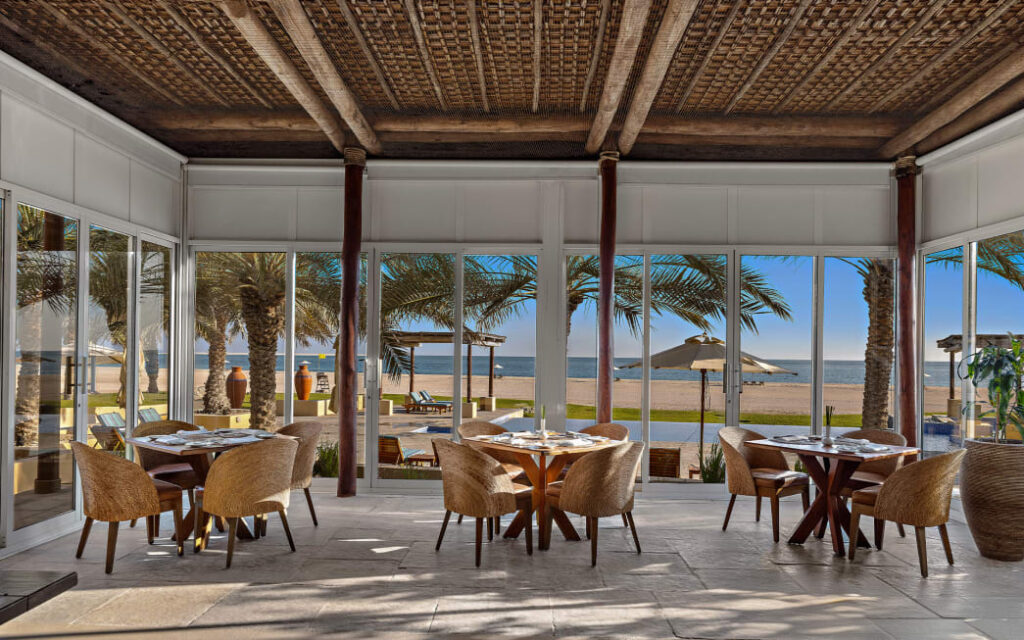
Sir Bani Yas Island is home to 8,000 mango trees and maintains on-site aeroponic farms that supply fresh lettuces and herbs. Guava berries grow in a greenhouse and the team are working towards all plant-based produce being home-grown – a rare feat for a luxury property in the region.
An on-site bottled water facility has eliminated the need for plastic bottles and the whole resort is 86 percent plastic-free. Even the island’s energy needs are sustainably met. Ten wind turbines generate enough electricity to power the entire island, with surplus energy fed back into the national grid.
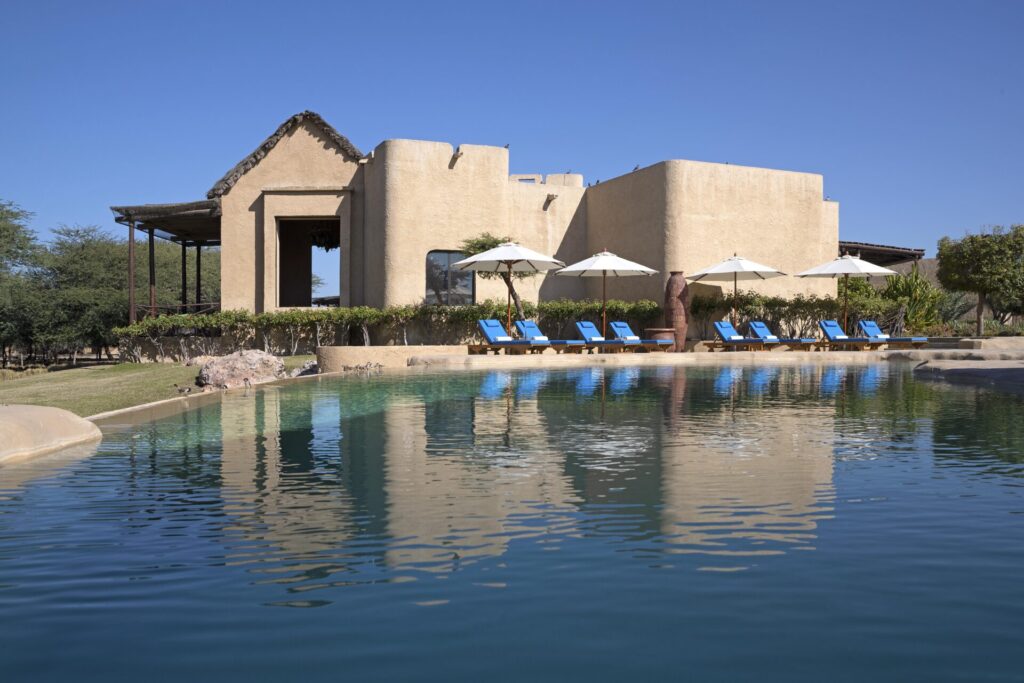
These initiatives aren’t just a marketing tool, they’re clearly built into how the island operates. For guests, the result is a stay where every detail – from the lettuce on your plate to the power running your plunge pool – has been considered. So you can end the day on your private deck, cocktail in hand, as wildlife meanders past your terrace, content in the knowledge that this eco-escape treads lightly on the land. Just don’t bring a book, because who needs a novel when you’re living the story.
DETAILS: Anantara Sir Bani Yas Island Al Sahel Villa Resort, PO Box 12452, Al Ruwais, Sir Bani Yas Island.







